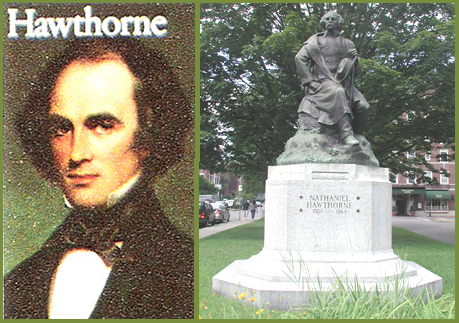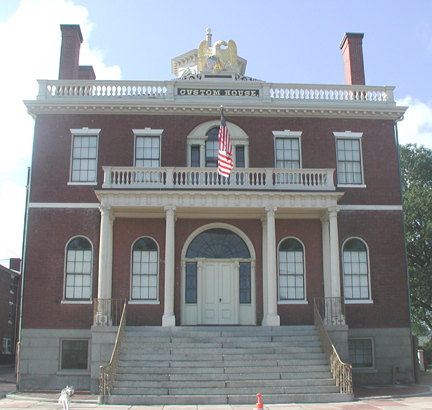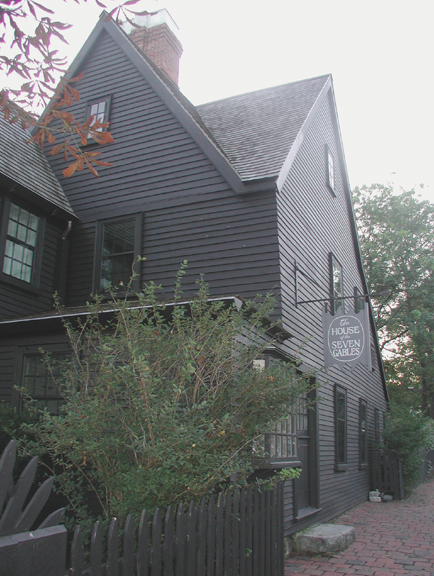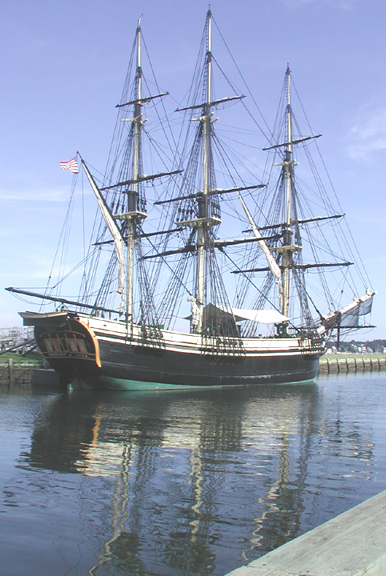Nathaniel Hawthorne

July 4, 1804 - May 19, 1864
Nathaniel Hawthorne as portrayed on a 1983 U.S. postage stamp and in a monument in Salem.
"The page of life that was spread out before me seemed dull and commonplace,
only because I had not fathomed its deeper import. A better book
than I shall ever write was there; leaf after leaf presenting itself to me,
just as it was written out by the reality of the flitting hour, and vanishing
as fast as written, only because my brain wanted the insight and my hand
the cunning to transcribe it." - The Scarlet Letter and Selected Tales, 67-68.

From 1846-1849 Hawthorne held a patronage position as the Surveyor
for the District of Salem and Beverly and Inspector of Revenue for
the Port of Salem. He lost this position when Zachary Taylor won the presidential
election. This event and the customs house in which Hawthorne worked are
featured in the almost autobiograpical introductory chapter of The Scarlet Letter.
The unhappy circumstances of his departure from office may be sensed
Hawthorne's description of the government symbol above the building's doorway:
"Over the entrance hovers an enormous specimen of the American eagle, with outspread
wings, a shield before her breast, and, if I recollect aright, a bunch of intermingled thunderbolts
and barbed arrows in each claw. With the customary infirmity of temper that characterises this
unhappy fowl, she appears, by the fierceness of her beak and eye, and the general truculency of
her attitude, to threaten mischief to the inoffensive community; and especially to warn all citizens,
careful of their safety, against intruding on the premises which she overshadows with her wings."

Noted for its association with Nathaniel Hawthorne, the
Turner House in Salem is an example of seventeenth century
architecture with close connections to Salem's sea-faring
history and more tenuous ones to the celebrated witch trials.
A descendant of one of the judges who conducted the Salem witch trials, Nathaniel Hawthorne is closely associated with the city of his birth. His 1850 novel, The Scarlet Letter, is often mistakenly thought to have been set in that city. Although the narrator claims to have based his novel on a manuscript found in the custom's house in Salem (where the author himself worked), the actual setting is Boston. In 1851 Hawthorne did publish a novel set in Salem, The House of the Seven Gables and, it is a tribute to his creative powers that this building has become a national landmark. In the first chapter of The Scarlet Letter Hawthorne describes Salem in the state to which it had declined since its days of prosperity following the American revolution: "In my native town of Salem ... half a century ago, in the days of old King Derby, was a bustling wharf ... which is now burdened with decayed wooden warehouses, and exhibits few or no symptoms of of commercial life"(36).

A replica of the 1797 East Indiaman Friendship of Salem
commemorates the town's former maritime and commercial importance.
Although Salem's importance as a port had declined by the middle of the nineteenth century, Hawthorne's life was affected by his hometown's maritime traditions. His father, Nathaniel Hawthorne, who was a
ship's captain, died of yellow fever on a voyage to Surinam in 1808.
Return to the Literary Links Page
© Grose Educational Media, 2006




